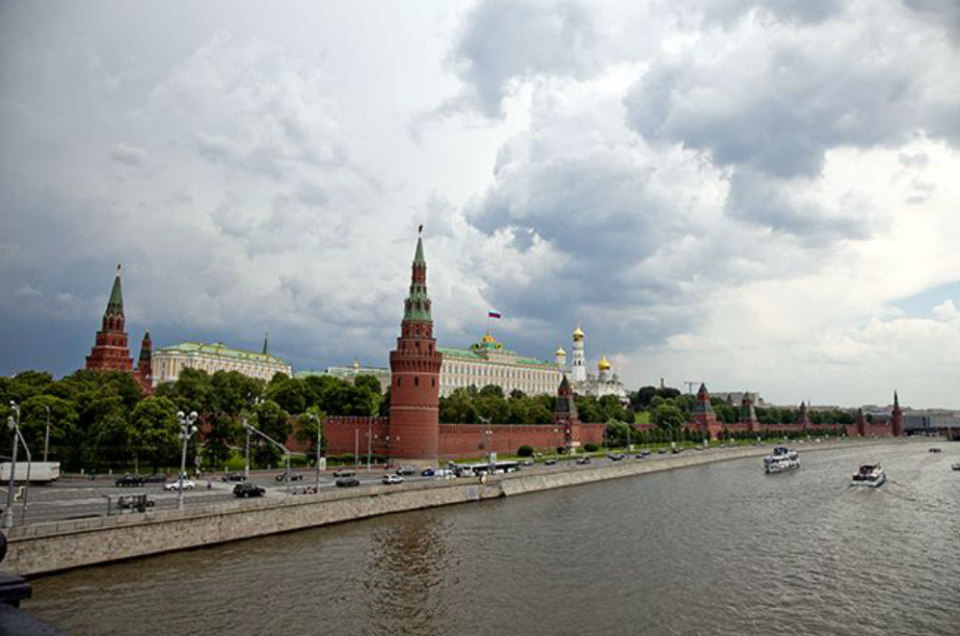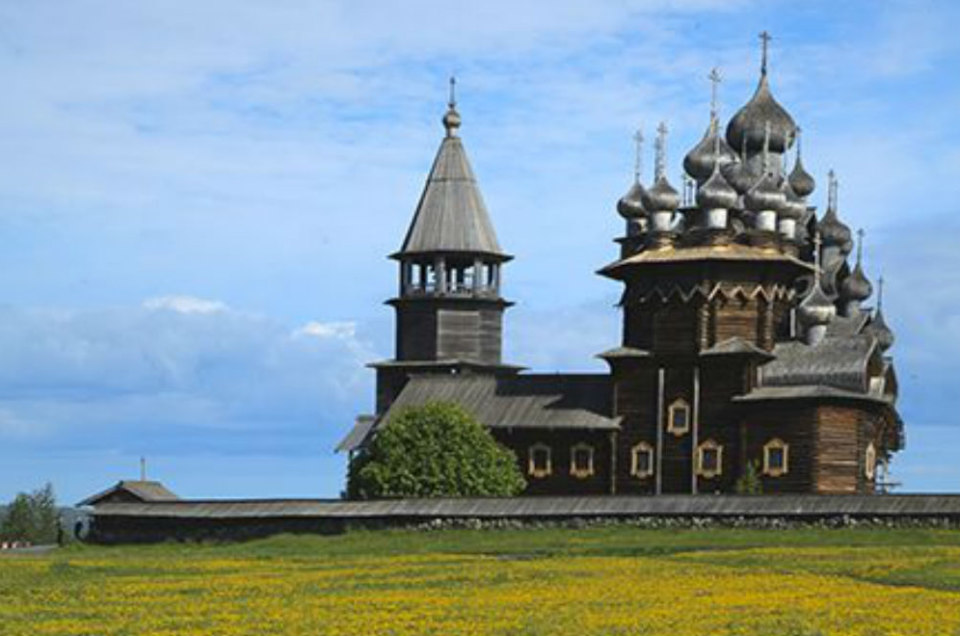It was with some trepidation that my husband and I booked a cruise to countryside in Russia; we were concerned about the constraints of traveling with 200 passengers and various other riverboats, but everything was arranged for ease and comfort, the English-speaking guides were knowledgeable and accommodating, and, for various reasons, independent travel would have been extremely frustrating.
First, the language is a real barrier in Russia. To our surprise, it was even difficult to find people who spoke English in the metro or on the streets of St. Petersburg and Moscow. Second, the visa process is time-consuming, expensive, and needlessly complicated; you need a reputable company to assist you. Third, museums and monuments were sometimes unexpectedly closed and someone has to navigate last-minute changes for you. Fourth, there is a range of tour choices each time you arrive in a port. We are happy to report that there are numerous tour options at every port and you can even customize your sailing and touring options as long as tell the company know several weeks in advance.
All Port Cities Are Not Created Equal:
Mandrogy: the village, completely destroyed during World War II, has been built to cater to tourists. Craftspeople demonstrate their skills and visitors can try their hand at various crafts. We headed for the Vodka Museum, which boasts 3041 kinds of Vodka and vodka bottles in the shape of Faberge eggs, figurines, rifles and a full submarine. Because the village was too touristy for our taste, we chose to go to a banya, an authentic, traditional bathhouse on the outskirts of town.
Inside the furnace-hot sauna, a ceremony master beats you lightly with birch and juniper branches, and invites you to rub your skin with honey.
After exposure to the searing heat, you go outside and can take a dunk in the lake or douse yourself with water to cool down. It is not recommended to spend more than five minutes in the banya.
Kizhi Island boasts the magnificent wooden Transfiguration church with its 22 cupolas and bell tower. The whole island is an open-air museum of wooden architecture, and dozens of the houses and chapels were transported from other locations.
In Kuzino, which is about midway between Moscow and St. Petersburg, we selected the Afternoon in the Russian Province tour, which included a short visit to the elegant, graceful Kirillov Belozersky monastery. Founded in 1397, it includes two kilometers of fortified walls, is constructed of stone and still has six monks in residence.
At a nearby grade school, students welcomed us into their classroom, and performed a little play based on a folk tale. Then we headed for the only school in Russia where they teach architecture and restoration using traditional techniques.
When the others headed back to the boat, we stayed and talked for over an hour with four students who work in a tourist shop during the summer. This personal contact was a memorable part of our visit.
In Yaroslavl we selected the tour of the Governor’s House. It was preceded by a city tour and a too-long visit to a lacquer factory. We left, walked around on our own, and saw brides and grooms everywhere. They carried and then released white doves, which is a Russian tradition. We rejoined the tour group for a visit to the Governor’s palace with costumed guides. A fine art collection hung in the ballroom.
In Uglich, which can actually be reached by a five-hour car ride from Moscow, we loved the private concert of choral music; it was so beautiful we were almost brought to tears. We also learned an enormous amount about history and current life from our local guide, and then had a delightful home visit. Valentina, our host, offered us Uglich moonshine, which she called “Russian whiskey.” It was personal experiences like this that were the highlight of the trip.
The Big Two: St. Petersburg
St. Petersburg is sometimes called the Russian Venice because of the canal system and the beauty of the architecture. The historic center has been designated a UNESCO World Heritage Site, and the city that Peter the Great founded in 1703 on the banks of the Neva river is a must-see on any trip to Russia.
Traveling around the city by car or bus can be very frustrating and involve long waits because of the crushing traffic. We decided, instead, to take the metro and the boat’s staff instructed us about taking a short bus ride to the metro, which stops at Nevsky Prospect, the main avenue in the center of the city. adventure.
Most guided tours of St. Petersburg are included for boat’s passengers, and, in addition, we signed up for the combined Canal Cruise and Kommunalka visit. After the Bolshevik revolution, the apartments of wealthy Russians were seized, and people from the countryside came to the big cities to find work. Each family was given one room in one of the apartments; they shared a kitchen, hallway and bathroom with strangers. Today, some people still live in kommunalkas, and we visited the room of an engineer; it was fascinating to talk to her and learn about her life.
Contrary to popular belief, you will not find Russian art at the Hermitage except for the fabulous vases, but you will find marble staircases and balustrades, gilded columns, royal thrones, mosaic floors, malachite facades, and a mechanical clock with a peacock on a tree and dragonflies that show the hours. The art collection is one of the finest in the world.
We were not happy with our local Hermitage guide, and the tour itself was like a drive-through. We suggest a private tour which can be arranged onboard the boat.
We can also recommend the optional tour of the Gold Room. The collection starts in 1000 B.C. with the gold pieces of nomadic chiefs and includes dazzling Sarmatian, Scythians, Greek and Czarist-era treasures. The second part of the tour goes to the storage area of the Hermitage, where the storage and restoration of the museum’s collection takes place.
We also attended an elegant, moving performance of Tchaikovsky’s Swan Lake in the Hermitage Theatre, which was built by Catherine the Great. Our advice can be reduced to three words: Go, Go, Go. And also go to visit Catherine the Great’s lavish Palace in Pushkin. Your imagination will be stimulated in the Agate room, where Catherine met her lovers.
The regular tour of St. Petersburg includes a trip to the Peter and Paul Fortress, on “Rabbit Island.” It is not to be missed because most of the Romanovs—the czars—are buried there in the Cathedral of St. Peter and Paul.
Moscow
A visit inside the walls of the Kremlin with its 11 churches and 5 palaces is indispensable. The dazzling icons in the Dormition cathedral—especially those from the llth and 12th centuries, literally took our breath away. In the church of Michael the Archangel, some of the most important rulers in Russian history are buried, including Ivan the Terrible.
The fairytale-like St. Basil’s church on Red Square, GUM department store (which is now an upscale shopping mall) and Lenin’s tomb are iconic stops on any visit to Moscow.
Taking the metro is a must. We did it on our own, marveling at the museum-quality statuary and art at some of the key metro stations.
The Shipboard Experience:
The two-week cruise begins in Moscow and ends in St. Petersburg (the reverse may be true, depending upon the date of departure). The dining room offers open seating and passengers can arrive whenever they wish during a two-hour time slot. Chi Gong classes are offered early in the morning. Our favorite activity was the high caliber lectures delivered by knowledgeable Russian tour guides with a special interest in history, art, politics, language, shopping and culture. The specific subjects of the lectures ranged from how to read the Cyrillic alphabet to the history of the Czars to Russia in the 20th and 21st centuries. Our favorite evening activity was the vodka tasting where the exuberant Siberian restaurant manager taught us the rules and signs of vodka drinking.

